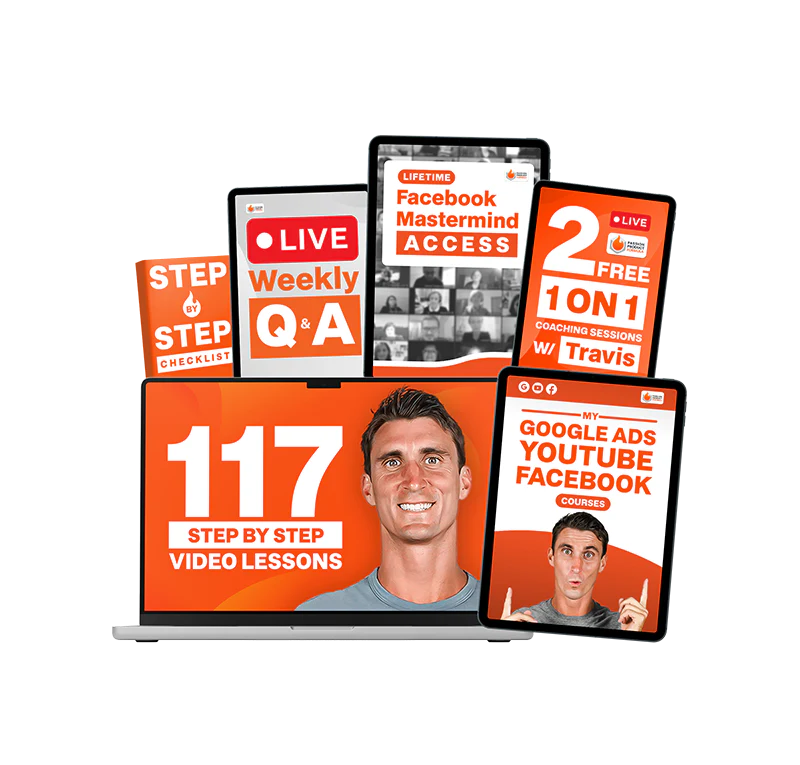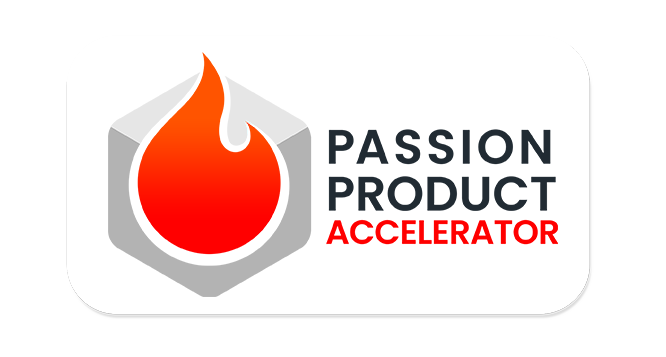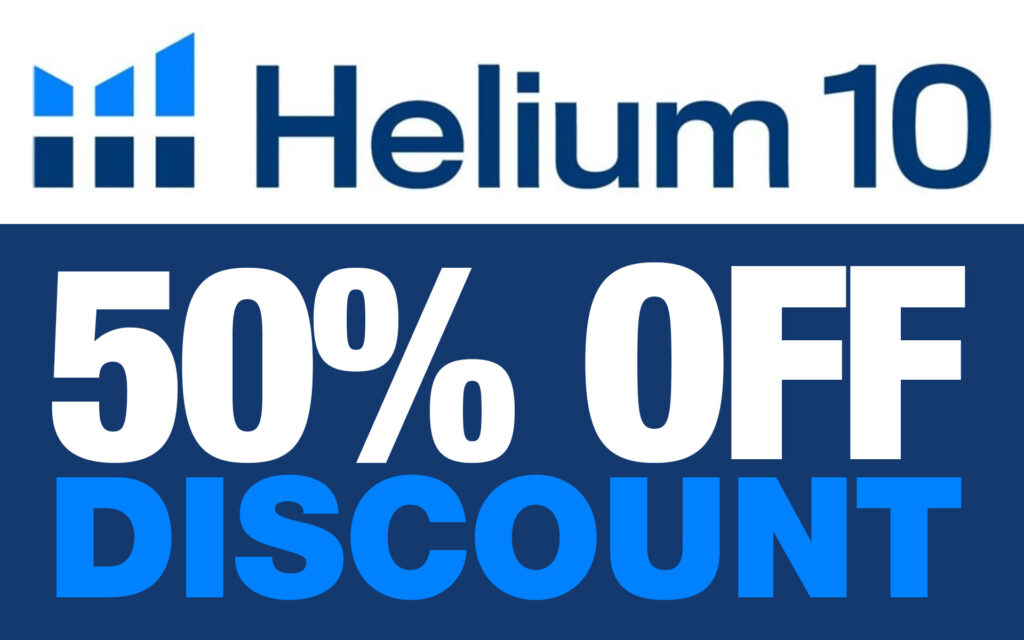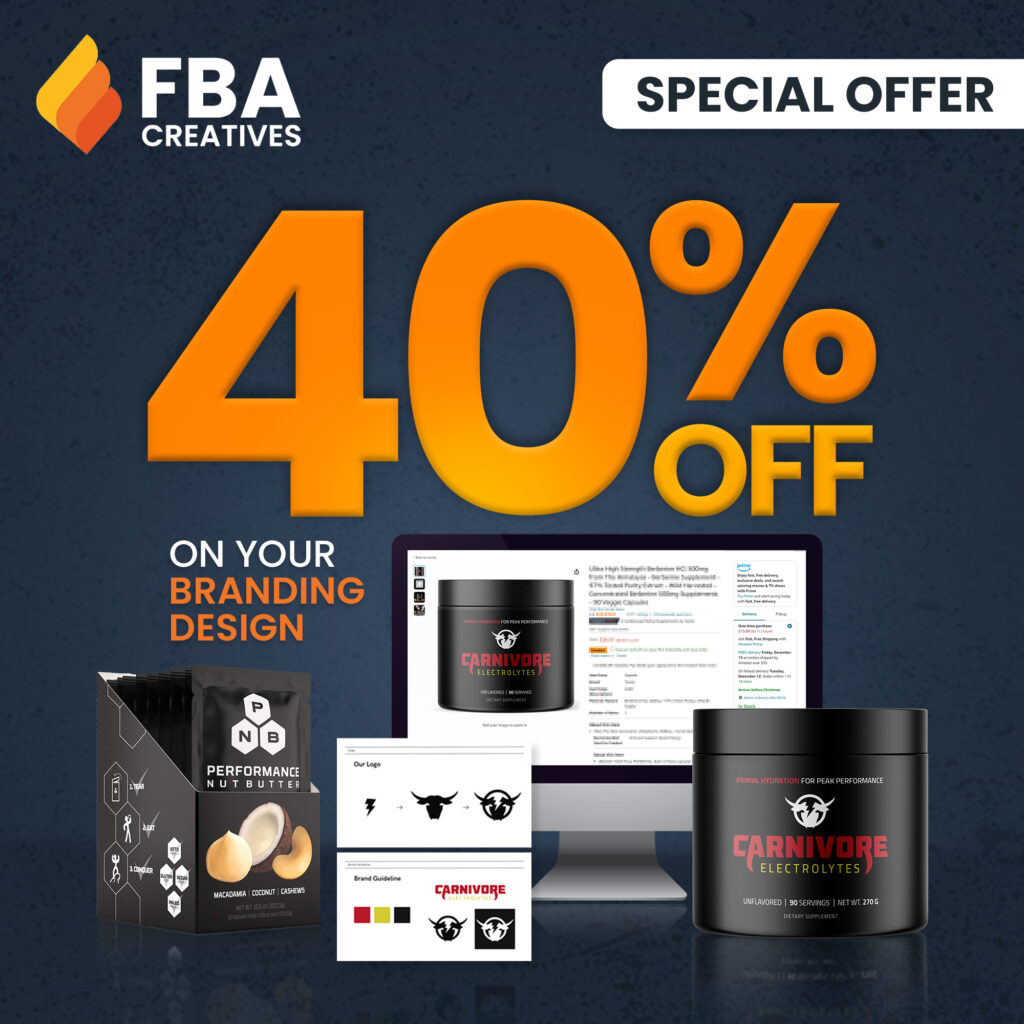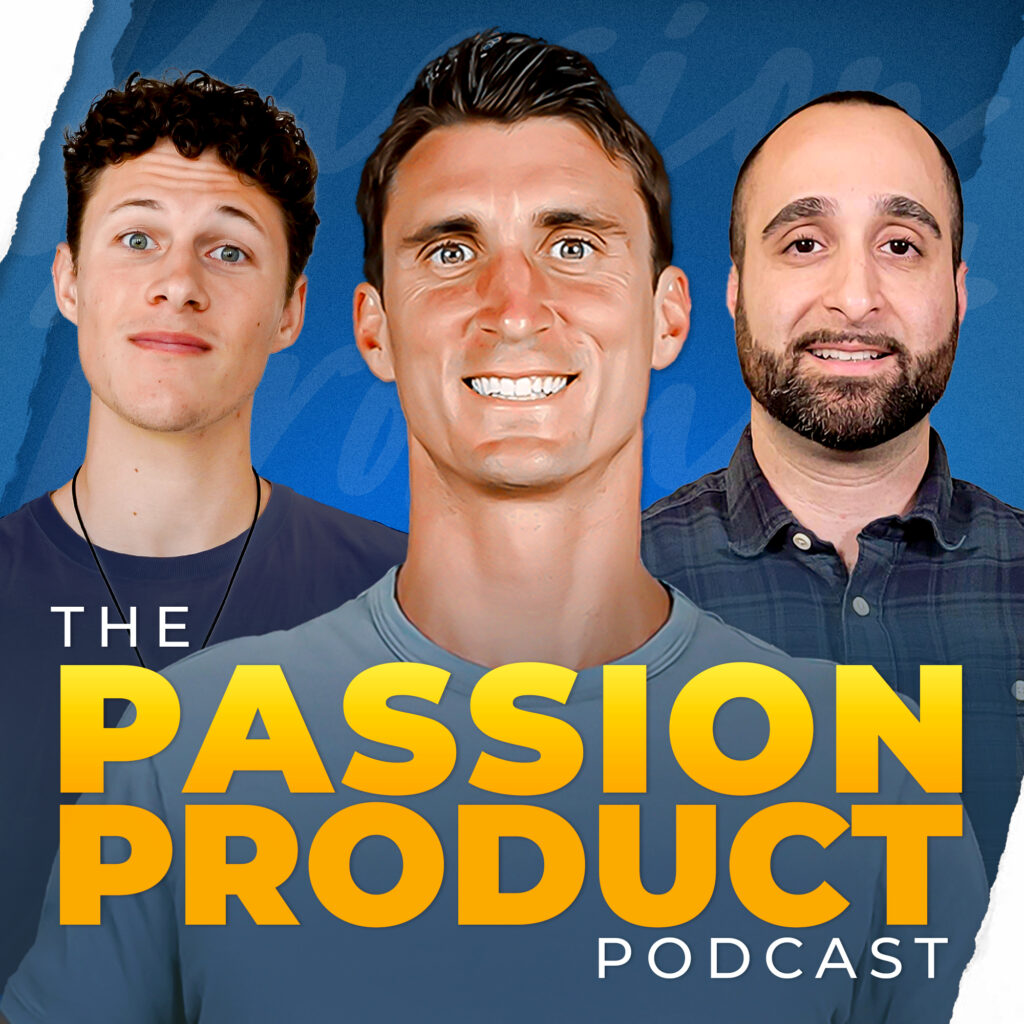Amazon FBA is still one of the most powerful ways to build a profitable online business. After over a decade of selling and helping hundreds of people launch their own six- and seven-figure brands, I’ve noticed a pattern. There are specific strategies that consistently lead to success—and without them, many sellers struggle or give up too early.
In this post, I’m going to share the top 10 Amazon FBA tips I’ve learned through firsthand experience. These are the exact tactics I’ve used to build multiple passion products and create true financial freedom. They also form the foundation of what I teach inside the Passion Product Formula, a step-by-step program designed to help new sellers launch their first product with confidence. If you’re serious about building your own Amazon FBA business, these tips could be the turning point.

- It’s Not Too Late to Start Amazon FBA
- Smart Product Research is the Real Foundation
- Sign Up for the Right Amazon Seller Account
- Source Your Amazon FBA Product with Trusted Manufacturers
- Shipping to Amazon FBA Made Simple
- Optimize Your Product Listing Like a Pro
- Launch With Momentum to Dominate Rankings in Amazon FBA
- Follow a Proven Formula—Don’t Wing It
- Don’t Go It Alone—Build a Support System
- Why Amazon FBA Still Works in 2025—And Why You Should Start Now
- Frequently Asked Questions (FAQs)
It’s Not Too Late to Start Amazon FBA

Let’s start by busting one of the biggest myths I’ve heard every single year: “It’s too late to start selling on Amazon.” I’ve been hearing this since I started, and each time, history proves it wrong. Back in 2015, people said the window had closed. Then five years later, those same people were calling 2015 to 2020 the “golden era.” When COVID hit, others said that was the golden era. Now in 2025, the same excuse still floats around—but it’s just not true.
The “Too Late” Myth—Debunked Every Year
The fact is, Amazon FBA isn’t over. It’s evolving. And those who are willing to evolve with it still have massive opportunities. Today, there are more than 170 million Prime customers in the U.S. alone, and over 300 million customers globally. That number is growing every year. As long as people are buying on Amazon, there is room to build a brand, launch a product, and earn income.
Why Amazon FBA Opportunity Still Exists
Yes, competition has increased—but so has buyer demand. What worked five years ago might not deliver the same results today, and that’s perfectly normal. The market is more sophisticated, and buyers expect more. That’s why you need to approach Amazon FBA with a sharper, more strategic mindset.
Here’s what that shift looks like today:
- Focus on solving specific problems for a defined audience
- Create branding that speaks directly to your customer niche
- Avoid saturated categories with copycat products
- Use data-driven tools to find underserved opportunities
- Build long-term value through real differentiation
Instead of chasing trends or selling generic items, I recommend building passion-driven products. These are products you actually care about—things your target customer can connect with. That’s the heart of the Passion Product Formula, and it’s exactly what makes this strategy work in 2025.
Market Size and Buyer Demand Are Growing
To put it into perspective, one of my Amazon FBA businesses this year is on track to hit over $1 million in revenue. It’s almost completely passive—I’m not doing day-to-day work, aside from restocking inventory. That’s the power of Amazon FBA when you do it the right way. And yes, it still works in 2025.
Smart Product Research is the Real Foundation
If you want to build a successful Amazon FBA business, it all starts with product research. This step is the foundation of everything that follows, and doing it right can set you up for long-term success. Instead of chasing fads, the goal is to identify what people are already searching for—and then create a product that better serves that need.
How I Use Keyword Tools to Discover Profitable Niches

The process I use begins with keyword tools, specifically the Magnet tool in Helium 10. This tool not only shows how many people are searching for specific keywords but also ranks the opportunity of each one.
For example, I started by searching for the broad keyword “electrolytes.” Then, I sorted the related terms by their Magnet IQ score, which highlights keywords with high demand and relatively low competition. That’s how I stumbled upon “carnivore electrolytes no sugar,” a keyword with over 1,000 monthly searches—but no product that fully matched the term.
The 5-Step Product Research Process I Follow
Here’s a breakdown of the method I use when researching potential Amazon FBA products:
- Start with a broad product category or keyword that you’re genuinely interested in
- Use Helium 10’s Magnet tool to generate long-tail keyword ideas
- Sort the results by Magnet IQ score to uncover overlooked opportunities
- Manually check Amazon to see if those keywords are underserved
- Look for a product gap you can fill with smart branding and positioning
By applying this exact strategy, I was able to create Carnivore Electrolytes—an existing product concept, but repackaged for a specific audience. That product alone is now on pace to bring in over $1 million in annual sales.
Why Passion-Driven Products Outperform Generic Ones
What made this work wasn’t just luck—it was niche targeting. Instead of launching a generic electrolyte powder, I created a passion product by tailoring it to a highly engaged community: people following the carnivore diet.
This is the essence of the Passion Product Formula. I teach how to research keywords, uncover gaps in the market, and create a product that speaks directly to a specific group of buyers. Passion-driven products not only perform better—they also stand out in a crowded marketplace.
Sign Up for the Right Amazon Seller Account
Before you can launch your first product, you need to set up your Amazon FBA seller account. While this step may seem straightforward, choosing the right plan from the start can save you money, time, and frustration down the road. It also sets the tone for building your business the right way—professionally and legally.
Free vs. Paid: What You Need to Know

Amazon gives you two options when setting up your seller account: the Individual plan and the Professional plan. Most people default to the free individual option, but that can end up costing more in the long run.
Here’s a quick breakdown of the differences:
- Individual Account: No monthly fee, but Amazon charges $0.99 for every item you sell
- Professional Account: $39.99/month, but no per-item fees, plus access to additional tools and features
- When to Upgrade: If you plan to sell more than 40 units per month, the Professional plan is the better deal
Choosing the Professional plan also unlocks benefits like inventory management, advertising options, and eligibility for the Buy Box—tools that are essential as your Amazon FBA business grows.
Right Way to Structure Your Amazon FBA Business

Before you even sign up for your seller account, make sure you have your business set up legally. That includes registering either a DBA (Doing Business As) or an LLC (Limited Liability Company). Both options are relatively easy to create, and they give your business the legal foundation it needs. In addition, set up a business bank account and, ideally, a business credit card. Keeping your business finances separate will make your accounting cleaner and your taxes easier.
Why This Step Sets You Up for Long-Term Amazon FBA Success
The seller account setup process usually takes only 10 to 20 minutes, but doing it right sets you up for long-term success. It helps you avoid tax issues, makes your brand more legitimate, and prepares you to scale.
This is also something I go deeper into inside the Passion Product Formula, where I walk through the full account setup process and provide resources for choosing the right structure. Starting with the right foundation makes every next step smoother—and more profitable.
Source Your Amazon FBA Product with Trusted Manufacturers
Once you’ve found your product idea and set up your Amazon FBA account, the next step is turning that idea into a real product. That means finding a manufacturer you can trust—someone who can consistently deliver quality at a reasonable cost. This part of the process can feel intimidating, especially if you’ve never worked with suppliers before. But with the right approach, it’s more manageable than you might think.
Start Your Amazon FBA Product Manufacturer Search

There are a few reliable ways to begin your search for a manufacturer:
- Google: Simply search “[your product] manufacturer” and you’ll find options. This worked well for my first product.
- Alibaba.com: Ideal for sourcing products overseas, especially from China.
- Thomasnet.com: Great for finding U.S.-based manufacturers and suppliers.
When I created my first product—a nut butter—I found the manufacturer just by Googling and getting on the phone with suppliers. It took effort, but it worked. For later products like tea blends and cards, I used recommendations from other sellers. That turned out to be the fastest and most reliable method.
Why Your Network is a Game-Changer
While online platforms are helpful, the best results often come from referrals. If someone you trust has already worked with a manufacturer, you can save yourself the trial-and-error phase and avoid bad experiences.
Here’s what makes networking so powerful in this step:
- You get access to vetted manufacturers
- You save time comparing dozens of unknown options
- You avoid common mistakes that beginners make
- You can sometimes get better pricing or service from shared connections
For example, I found the manufacturer for Carnivore Electrolytes through a friend. That friend, a former student from my program, started with just $1,500 and now generates over six figures a month with his product. That’s the kind of shortcut good networking can provide.
How the Passion Product Community Helps You Source Smarter
Inside the Passion Product Formula, I provide a vetted list of manufacturers that students have successfully used for their own Amazon FBA businesses. This list is a major time-saver, and it helps new sellers avoid scams and delays. More importantly, being surrounded by a community of other FBA sellers gives you insight, accountability, and faster progress.
The takeaway is simple: finding a manufacturer is a crucial step, but you don’t have to do it alone. Whether through direct referrals or community support, you can source your product with confidence.
Shipping to Amazon FBA Made Simple
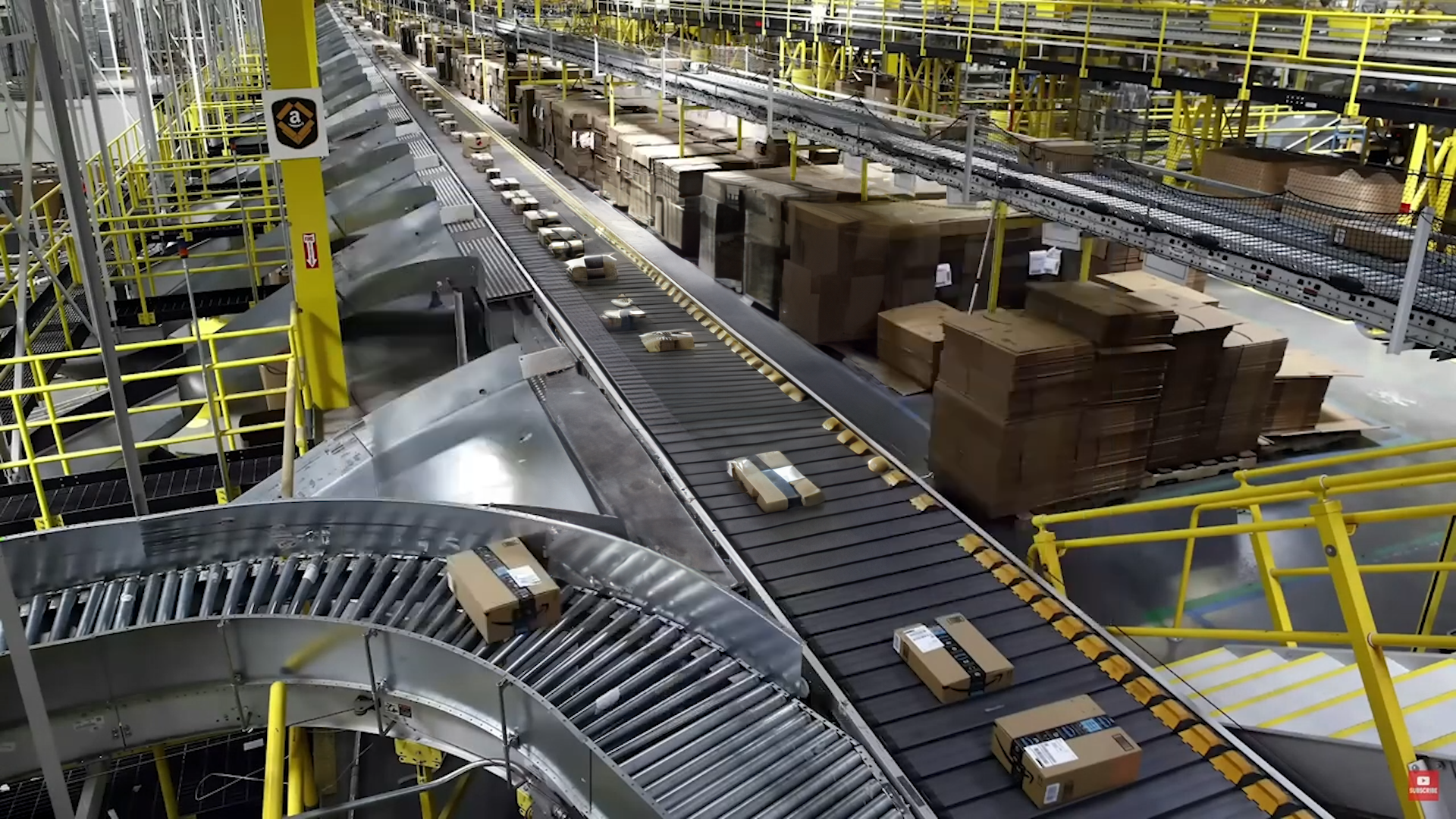
Shipping might sound like the most technical part of starting an Amazon FBA business, but the truth is—Amazon makes it incredibly simple. Once you’ve got your product manufactured, getting it into Amazon’s fulfillment network is just a matter of following a few guided steps. Whether you’re doing it yourself or letting your manufacturer handle it, the system is designed to be beginner-friendly.
How Amazon’s FBA Backend Simplifies Shipping
Once you log into Seller Central, you’ll find everything you need to set up a shipment. Amazon will walk you through the process:
- You create a shipping plan
- Amazon provides barcode labels for your units
- You print and apply the labels, then pack the boxes
- Finally, you ship the boxes to an Amazon fulfillment center
You can drop the boxes off at a nearby UPS location on your own if you prefer a hands-on approach. However, a more efficient option is to let your manufacturer handle the shipping directly to Amazon for you.
Manufacturer-Managed Shipping: The Hands-Off Option
Many manufacturers today are already familiar with Amazon FBA and can handle the entire shipping process for you. That includes printing labels, packing your inventory, and sending it directly to Amazon’s warehouse.
Here’s why this method works so well:
- It removes logistics from your plate
- It ensures shipping is done professionally
- It saves time and lets you focus on branding and marketing
- It reduces the risk of errors in prepping or labeling
This approach is especially helpful if you’re aiming to keep operations streamlined and cost-effective. It also makes it easier to automate your business processes right from the beginning.
The Start of Passive Fulfillment with Amazon FBA
Shipping is one of the most common fears for new sellers, but once you go through it once, it becomes second nature. In fact, with the right setup, it’s often the last thing you need to worry about day to day. My Amazon FBA businesses are mostly hands-off now—I just reorder inventory when it gets low.
This is one of the reasons Amazon FBA is so scalable. Once you’ve handled shipping once or twice—or handed it off to your supplier—it becomes a repeatable process that runs in the background while you grow your brand.
Optimize Your Product Listing Like a Pro

Once your product is ready and your inventory is in Amazon’s warehouse, it’s time to focus on the most important sales tool you have: your product listing. This is where all the traffic you’ve earned through research and strategy turns into actual customers. If your listing isn’t optimized, you’re leaving money on the table—no matter how great your product is.
Your Main Image Is Your First Impression
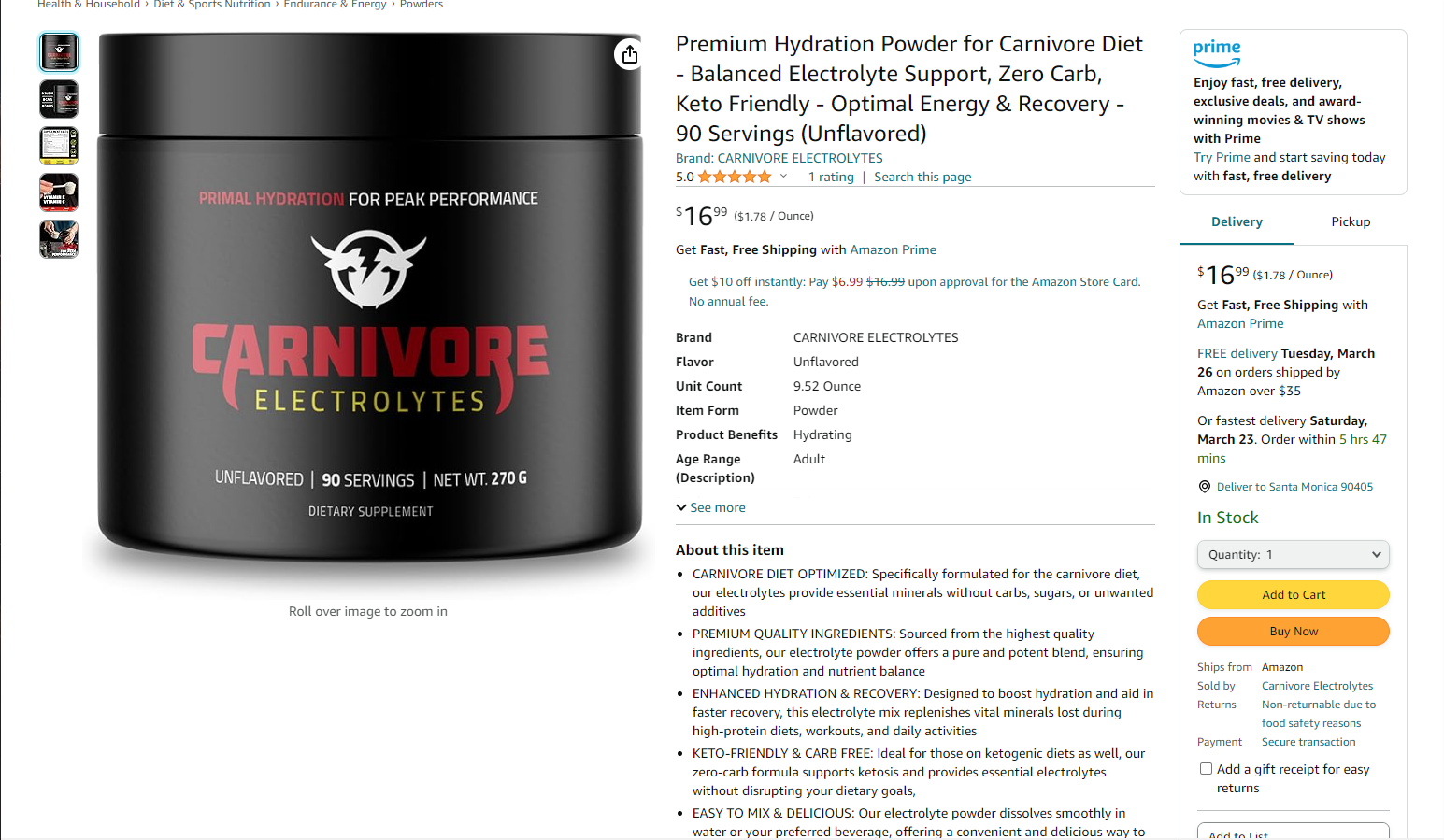
The first thing customers see when they search on Amazon is your main product image. This single photo plays a massive role in whether someone clicks on your listing or scrolls past it. Your job is to make sure that image stands out and clearly communicates what your product is.
For example, with Carnivore Electrolytes, I used bold black packaging and red lettering to make it pop. It instantly signals to anyone following the carnivore diet that this product was made for them. That’s intentional—and you should apply the same kind of visual clarity and strategy to your own listing.
Use Keywords to Drive Visibility and Sales
Amazon is a search engine, which means keywords are just as important as product photos. Your title, bullet points, and backend fields need to include the exact terms your audience is searching for. Here’s how I structure keyword placement in a listing:
- Title: Include your primary keywords like “electrolyte powder,” or your niche term (e.g., “carnivore”)
- Bullet Points: Highlight benefits using relevant secondary keywords
- Description/Backend: Use additional keywords that didn’t fit in the title or bullets
Using the right keywords ensures Amazon knows when to show your product—and helps you rank higher in search results.
Branding and Visuals Build Trust in Amazon FBA

Beyond the main image, you have other visual real estate to work with. Your side images and A+ content should clearly show product benefits, lifestyle usage, and credibility markers like zero sugar, clean ingredients, or certifications.
For all my listings, I work with FBAcreatives.com, a team that handles branding, packaging, and even logo design – you can use my code TRAVIS to get 40% off discount. If you’re not confident in your creative skills, getting professional help is worth it. A polished, trustworthy listing makes a massive difference in conversion rates. When done right, your product listing becomes a silent salesperson—working 24/7 to convert curious browsers into paying customers. That’s why this step is worth the extra time, strategy, and attention to detail.
Launch With Momentum to Dominate Rankings in Amazon FBA
You could have the perfect product, a stunning listing, and a solid brand—but none of it matters if your product doesn’t launch the right way. One of the most critical parts of succeeding with Amazon FBA is creating momentum from the very first day your listing goes live. Amazon rewards early performance, so your launch strategy directly impacts your long-term visibility and sales.
Why Amazon Rewards Fast Early Sales
When your product starts selling quickly right after launch, Amazon’s algorithm takes notice. It views your listing as relevant and in-demand, and pushes it up in the search results. This higher visibility drives even more sales, creating a powerful snowball effect.
That’s why ranking early is everything. If you’re buried on page 5, it’s hard to get organic sales. But if your listing hits page 1 within the first few days, you’re competing for the majority of the traffic and conversions in your niche.
How to Build Hype Before You Amazon FBA Launch

A strong launch starts weeks before your product ever goes live. The goal is to create a tribe of people who are excited and ready to buy the moment you launch.
Here’s how to build that launch list:
- Use social media to share behind-the-scenes content and updates
- Start collecting email addresses of interested buyers
- Direct message (DM) people who comment or follow you
- Build anticipation with launch countdowns and exclusive early access offers
By the time launch day arrives, your audience should be eager and ready. When they buy immediately, Amazon sees that surge in activity and boosts your ranking.
The Snowball Effect That Drives Organic Sales
What happens next is what I call the Amazon snowball. That initial spike in traffic and conversions pushes your listing higher in the search results. As you climb the rankings, even more people discover your product organically—and your sales grow without spending heavily on ads. Inside the Passion Product Formula, I teach step-by-step how to craft a full pre-launch strategy, build your audience, and execute a successful product launch. The right launch isn’t just a boost—it’s the engine that powers long-term growth on Amazon FBA.
Follow a Proven Formula—Don’t Wing It
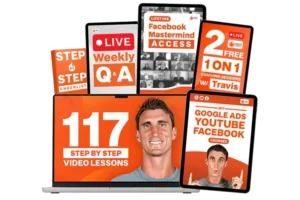
One of the most common mistakes people make when starting an Amazon FBA business is trying to figure it all out on their own. It’s easy to fall into the trap of watching random YouTube videos, piecing together conflicting advice, and second-guessing every decision. But when you’re learning something complex—like building an online business—it’s faster, cheaper, and smarter to follow a step-by-step formula that’s already been proven to work.
Why Going Solo Slows You Down
When I tried learning to surf on my own, I kept wiping out. It wasn’t until I hired a coach that I finally made progress. He had experience, knew exactly what mistakes I was making, and guided me to success in a fraction of the time.
Amazon FBA is no different. Without a roadmap, you’re likely to:
- Waste time on unproven strategies
- Spend money testing what someone else already figured out
- Get discouraged by mistakes that could’ve been avoided
- Burn out before you even launch
Following a system doesn’t just reduce risk—it accelerates results.
What the Passion Product Formula Offers
The Passion Product Formula is built for people who want clear direction. It shows you:
- How to find a profitable product idea
- How to validate demand before investing
- How to build a brand that people care about
- How to launch and grow using real customer interest
It’s the same process I’ve used to launch multiple successful Amazon FBA products—and the same system that’s helped hundreds of students go from idea to income.
The Shortcut to Real Results
You don’t need to be an expert or have years of experience. You just need to follow a formula that’s already working. Whether or not you join my program, I highly recommend you learn from someone who’s done it before and helped others do it too. It’s the difference between floundering for months—or launching your product with confidence and clarity.
Don’t Go It Alone—Build a Support System
Trying to build an Amazon FBA business on your own can be overwhelming. When you’re faced with endless decisions, new tools, and unfamiliar challenges, isolation only makes things harder. In fact, going it alone is one of the biggest reasons people give up. What changed everything for me was surrounding myself with other entrepreneurs—people who had either been where I was or were growing alongside me.
The Problem With the Lone Wolf Mentality
At first, I thought I could figure everything out myself. I watched videos, read blog posts, and tried to troubleshoot every issue alone. But that approach only took me so far—and it slowed down my progress.
Here’s what often happens when you try to do everything solo:
- You waste time reinventing the wheel
- You second-guess your decisions and stall
- You don’t get feedback when you really need it
- You burn out without accountability or support
The truth is, success becomes much more attainable when you’re not doing it all by yourself.
How Community Accelerates Your Growth
Everything changed for me when I joined a mastermind group with five other e-commerce sellers. We supported each other, shared strategies, and pushed each other to keep going. That one decision quadrupled my business. Later, I met mentors who helped me break through even bigger roadblocks. They’d already done what I was trying to do—and that kind of insight saved me from costly mistakes.
This is exactly why the Passion Product Formula includes:
- Access to a private community of sellers
- Peer groups based on your level
- Ongoing feedback and motivation
- Shared resources like manufacturer lists and launch templates
Why You Don’t Have to Do It Alone
There’s no reason to isolate yourself in this journey. Being part of a like-minded community gives you momentum, support, and answers when you need them most. Whether you’re just starting out or stuck on your second product, the fastest path to growth is learning from people who are already doing what you want to do—and lifting each other up along the way.
Why Amazon FBA Still Works in 2025—And Why You Should Start Now

If you’ve made it this far, one thing should be clear: Amazon FBA isn’t dead—it’s just evolved. The rules have changed, but the opportunity is bigger than ever. With over 300 million customers and a global platform that continues to grow, Amazon remains one of the best places to launch a business with real earning potential and long-term freedom. But success doesn’t come from winging it. It comes from strategy, community, and action. That’s exactly what the Passion Product Formula is designed to give you. It’s more than just a course—it’s a complete system that includes:
- Step-by-step lessons to guide you through every stage
- A community of sellers to support you and share real resources
- One-on-one coaching and group calls for feedback and clarity
- A 7-day unconditional money-back guarantee
- And if you don’t earn at least $1,000 in your first year, I’ll personally refund you and give you $1,000 out of my own pocket
I’ve seen this formula work over and over again—not just for me, but for hundreds of students who turned ideas into real Amazon FBA brands. If you’re ready to build a business that gives you flexibility, income, and control over your time, the next step is simple: take action now. The sooner you start, the faster your future begins.
Frequently Asked Questions (FAQs)
1. Is Amazon FBA still profitable in 2025?
Yes, Amazon FBA is still highly profitable in 2025. There are more buyers than ever, and with the right product and launch strategy, you can build a sustainable income stream—even in competitive markets.
2. Do I need a lot of money to start?
Not necessarily. While some sellers start with a few thousand dollars, you can begin lean by choosing a smaller product, managing inventory carefully, and handling parts of the process yourself. What matters most is strategy—not budget.
3. How do I know if my product idea is good?
Start by researching keywords on tools like Helium 10 and looking for unmet demand. A good product idea solves a problem for a specific audience and has room to stand out. If you can’t find a direct competitor for a searched term, that’s a strong sign of opportunity.
4. Can I do Amazon FBA while working a full-time job?
Absolutely. Many sellers launch their business while working full-time. Amazon handles fulfillment and shipping, so you can focus on product development, marketing, and growth during evenings or weekends.
5. How long does it take to see results?
With proper research and a strong launch, some sellers see results within weeks. However, it depends on your niche, marketing strategy, and how much effort you put in upfront. Consistency and following a proven formula will always speed things up.


